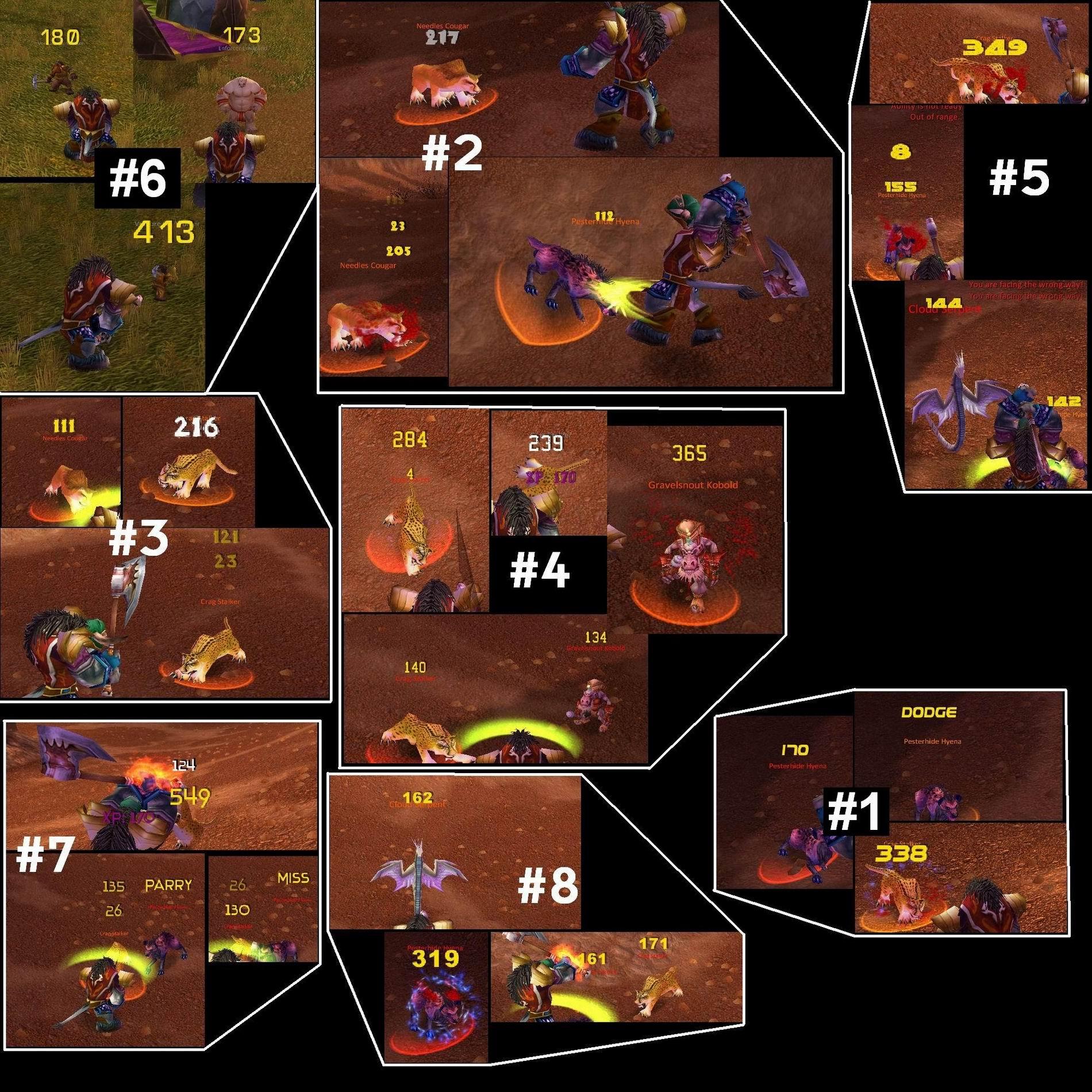- Targets1
- Item Level445
- Encounter TypeMax
- 1Arcane MageView Breakdown48,112 DPS
- 2Beast Mastery HunterView Breakdown45,900 DPS
- 3Enhancement ShamanView Breakdown44,628 DPS
- 4Marksmanship HunterView Breakdown44,274 DPS
- 5Unholy Death KnightView Breakdown43,594 DPS
- 6Elemental ShamanView Breakdown43,383 DPS
- 7Balance DruidView Breakdown43,106 DPS
- 8Survival HunterView Breakdown42,588 DPS
- 9Havoc Demon HunterView Breakdown42,250 DPS
- 10Frost MageView Breakdown41,427 DPS
- 11Frost Death KnightView Breakdown41,237 DPS
- 12Windwalker MonkView Breakdown41,230 DPS
- 13Assassination RogueView Breakdown40,681 DPS
- 14Subtlety RogueView Breakdown40,619 DPS
- 15Fire MageView Breakdown40,606 DPS
- 16Feral DruidView Breakdown40,526 DPS
- 17Retribution PaladinView Breakdown40,424 DPS
- 18Destruction WarlockView Breakdown39,808 DPS
- 19Demonology WarlockView Breakdown39,749 DPS
- 20Affliction WarlockView Breakdown39,078 DPS
- 21Outlaw RogueView Breakdown38,814 DPS
- 22Shadow PriestView Breakdown35,864 DPS
- 23Arms WarriorView Breakdown28,754 DPS
- 24Fury WarriorView Breakdown28,511 DPS
DPS Rankings Overview
These rankings are created using SimulationCraft, a program that is highly tested and trusted for simulating in-game encounters with characters.
We use SimulationCraft because simulators permit a high degree of control by allowing us to use specific talents, rotations, gear, possible boss mechanics, etc. to arrive at repeatable results that can be compared across specs and time. Also, simulators allow us to average out results from thousands of fights to get a feel for how a spec performs all of the time and not in one amazing fight.
If you are curious to learn about the simulation fight encounters of Max and Real, we recommend to read our past articles that describe them in Part I and Part II.
What is the most used DPS addon? I am using Recount but I am not sure it is the da-facto addon. I want to use the same addon most people would use to see how high I rank in their screen.
Common Questions
The damage meters for my boss fights look very different than these rankings. Why?
There are any number of reasons why in-game results will differ from simulated (or log based) results. A few common differences include the following.
- Fight Length: Dungeons and LFR raids often have shorter fight durations which can result in much higher DPS as the value of DPS cooldowns is greatly increased in short fights.
- Multiple Targets: The current DPS rankings offer strictly single-target and splash-AoE (1 main target+2). There are scenarios in-game where there are a lot more targets which can allow for much more aggressive AoE.
- Player Variables: Skill, latency, gear, a lucky string of crits, etc. can all significantly impact in-game DPS. Rankings can help represent general trends, but they’ll rarely predict the outcome of a specific encounter with all its unique factors.
How do these rankings compare to other sources that use raid logs to show spec comparisons?
Raid log sites offer a perspective on how some of top players are performing with each spec. These rankings can be helpful to understand how specs are faring in the current raid tier and often reveal unexpected synergies between specific specs and boss encounters. However, log based sites are subject to their own data problems including players who artificially boost their DPS by employing technical or social exploits, changes in popularity of specs, uneven sample sizes, and generally unrepeatable or uncontrolled results.
While simulators allow us to get a feel for how a spec performs all of the time through averaging out thousands of fight results, it is important to note that simulators are generally weak when modeling specific fights in a raid tier, and additionally they rely on data that is as good as the theorycrafting community is able to produce.
Overall, no single DPS ranking is perfect and they should all be considered when evaluating specs. Simulators and log based solutions both offer value to the WoW community.
Mac users have enjoyed a long run of fairly virus-free computing, but it shouldn’t be taken for granted that there is no virus. While Apple has kept a close grip in the App Store, some malware, on rare occasions, still make it up there. Likewise, the macOS Gatekeeper is only useful when you do not override its settings, but that will restrict you to only install apps from the App store. So if you download an app that didn’t come from the App Store, how can you check whether it is safe to install?
About Suspicious Package
Suspicious Package is a special-purpose utility program designed to check macOS packages – software files that install application programs. Packages typically contain several components, including the app itself, scripts that automate the installation process, and other files the program needs. Although the macOS packaging system is an efficient way for developers to organize all the pieces that go into an app, it’s also possible for hackers to subvert it by inserting their own malicious programming. Suspicious Package allows you to inspect the contents of any macOS package, potentially heading off a malware infection.
Download and Installation
The Suspicious Package app is available for download directly from mothersruin.com. To install it, you may have to temporarily bypass the macOS Gatekeeper which normally prevents you from installing non-App Store programs by accident. In “System Preferences” go to “Security & Privacy -> General -> Allow apps downloaded from:” and change the setting to “App Store and identified developers.” When you open the Suspicious Package dmg file, you’ll see the warning, “SuspiciousPackage.dmg blocked from opening because it is not from an identified developer.” Click the “Open Anyway” button to install the program.


Quick Look
The “Quick Look” feature displays a package summary from the Finder without having to launch the Suspicious Package app itself. This is a handy time-saver if you have several packages to check. To use Quick Look, highlight the package you want to evaluate from the Finder, then find the Quick Look item in the Finder’s File menu, or press “command + Y.”
Check a Package
To check a package you’ve downloaded, launch Suspicious Package. From the “File” menu, select “Open,” then browse your Downloads or other folder for a package file to inspect. Suspicious Package analyzes the file, then displays a set of tabs: “Package Info,” “All Files,” and “All Scripts.” If the app detects problems with the package, the Review icon indicates a warning.
Package Info
The Package Info tab gives an overview of what’s in the package. It shows how many items are installed, how many scripts it uses, and whether it is signed or not. It lists when the package was downloaded and the browser name. Finally, if the package has problems, Package Info shows the number of warnings given.

All Files
Resembling a Finder window, All Files shows all the files stored in the package, including the application itself, supporting files, and folder organization. Click on any folder to see its contents.
All Scripts
The All Scripts tab lists all the macOS shell scripts used to install the package. Each script is a mini-program containing text commands used to copy, create, and delete files. Click on a script name to see the instructions. The File menu includes options to edit a script, should you want to.
Unsigned Packages
When using Suspicious Package, you may see a warning that says the package isn’t signed. Package signing is a feature Apple developed so software developers can “stamp” their programs with a digital signature officially tying the application to the people who wrote it. The signature gives confidence that the software is legit and not a cheap knock-off. In fact, Apple requires signatures for all software in the App Store. Some developers, however, don’t spend the extra effort needed to sign their software. Many unsigned packages, including open-source and freeware programs, are actually okay to use. On the other hand, if you’re buying Mac software from a major vendor, the absence of a signature is a big red flag.
Conclusion
How To Check Damage In Dungeon Wow
The vast majority of Mac programs are free of malware. However, programs downloaded from third-party sites carry a small risk of spyware and other unwanted baggage. Though primarily aimed at technical users, Suspicious Package lets anyone evaluate macOS software for malware and other problems. The app clearly reveals the contents of a software package before you install it. Especially for Mac people who don’t use the App Store as their only source for software, Suspicious Package makes a worthy addition to your Mac toolbox.